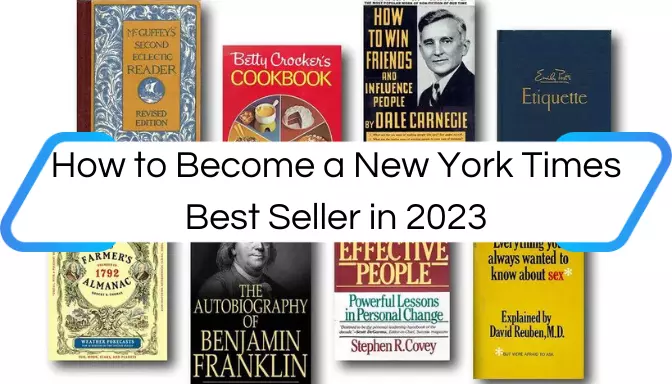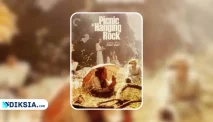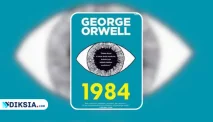Diksia.com - Are you an aspiring author who dreams of seeing your book on the prestigious New York Times Best Seller list?
Do you wonder what it takes to achieve this coveted status and how to compete with thousands of other books published every year?
If so, this article is for you. Here, we will explain what the New York Times Best Seller list is, how it works, and what you can do to increase your chances of becoming a best seller in 2023.
What is the New York Times Best Seller List?
The New York Times Best Seller list is widely considered the preeminent list of best-selling books in the United States. Since October 12, 1931, The New York Times Book Review has published the list weekly.
In the 21st century, it has evolved into multiple lists, grouped by genre and format, including fiction and nonfiction, hardcover, paperback and electronic.
The list is based on a proprietary method that uses sales figures, other data and internal guidelines that are unpublished, how the Times compiles the list is a trade secret.
In 1983 (as part of a legal argument), the Times stated that the list is not mathematically objective but rather editorial content. In 2017, a Times representative said that the goal is that the lists reflect authentic best sellers.
The list has been a source of controversy. When the Times believes a book has reached the list in a suspicious way such as through bulk purchases the book’s entry on the list is marked with a dagger symbol.
How Does the New York Times Best Seller List Work?
The New York Times does not reveal the exact criteria or methodology for selecting and ranking the best-selling books on its list. However, some general information is available from various sources.
According to The New York Times website, the list is based on “weekly sales reports obtained from selected samples of independent and chain bookstores and wholesalers throughout the United States”.
The sales figures are confidential and are not disclosed to the public or to the publishers. The samples are chosen randomly and represent a cross-section of booksellers across the country. The number of reporting outlets varies from week to week, but usually ranges from 750 to 950.
The New York Times also states that it applies certain standards and definitions to its data, such as excluding textbooks, reference books, test preparation guides, journals, workbooks, crossword puzzles, etc.
It also excludes sales from certain online retailers, such as Amazon.com and Barnes & Noble.com, as well as sales from book clubs, libraries, and self-published books (unless they are distributed by a major publisher).
The Times also adjusts its data for seasonal variations and other factors that may affect sales patterns.
The New York Times does not rank all the books that are reported to it, but only those that meet its editorial standards.
The number of books on each list varies depending on the number of eligible titles and the space available in the print edition of The New York Times Book Review.
The lists are divided into several categories:
- fiction (hardcover, paperback trade fiction, paperback mass-market fiction),
- nonfiction (hardcover, paperback trade nonfiction),
- children’s books (picture books, middle grade hardcover, young adult hardcover), a
- dvice/how-to/miscellaneous (hardcover), business (hardcover),
- graphic books (hardcover/paperback),
- manga (paperback),
- audio fiction/nonfiction (monthly),
- e-books (combined fiction/nonfiction),
- combined print & e-book fiction/nonfiction.
The ranking of each book on each list is determined by a formula that weights sales according to the type of venue where they are sold: independent bookstores have more influence than chain bookstores; general bookstores have more influence than specialty bookstores; etc.
The formula also takes into account other factors such as longevity on the list, price of the book, format of the book, etc. The exact formula is not disclosed by The New York Times.
The lists are compiled by The New York Times staff editors based on the sales data provided by Nielsen BookScan and other sources.
The editors also have discretion to exclude or include certain titles based on their judgment of quality, relevance, and appropriateness for their audience. The editors may also consult with outside experts or reviewers to evaluate certain books or genres.
The lists are usually published online on Wednesdays and in print on Sundays for books sold through Saturday of the previous week.
The online version may include additional features such as extended lists (up to 15 books per category), best sellers by region, best sellers by month, best sellers by year, etc.
The print version may include reviews, excerpts, interviews, or other editorial content related to the best-selling books.
How to Become a New York Times Best Seller in 2023?
Becoming a New York Times best seller is not an easy feat. It requires a combination of factors such as writing a great book, finding a reputable publisher, marketing your book effectively, reaching a wide and diverse audience, and generating enough sales to stand out among the competition.
There is no guarantee or formula for success, but there are some strategies and tips that may help you increase your chances of achieving this goal in 2023.
Write a book that appeals to a large and loyal readership.
The most common genres that dominate the New York Times best seller list are fiction (especially thriller, romance, historical fiction, fantasy, and science fiction), nonfiction (especially memoir, biography, history, politics, self-help, and health), and children’s books (especially young adult and middle grade).
However, this does not mean that you have to write in these genres or follow the trends. You can write in any genre or style that you are passionate about and that showcases your unique voice and perspective.
The key is to write a book that resonates with your target audience and that offers them something new, original, engaging, informative, entertaining, or inspiring.
You also need to write a book that meets the professional standards of quality, accuracy, and credibility expected by The New York Times editors and reviewers.
Find a publisher that can support your book.
Unless you are already a well-known author with a large fan base and a proven track record of sales, it is very unlikely that you will become a New York Times best seller as a self-published author.
The New York Times does not consider self-published books for its list unless they are distributed by a major publisher.
Therefore, you need to find a publisher that can provide you with the resources and services necessary to produce, distribute, and promote your book effectively. This includes editing, design, printing, distribution, marketing, publicity, etc.
You also need to find a publisher that has experience and connections in the publishing industry and that can negotiate favorable terms and deals for your book with booksellers, wholesalers, media outlets, etc.
You may need to hire an agent to help you find and secure a suitable publisher for your book.
Market your book strategically.
Even if you have written a great book and found a reputable publisher, you still need to market your book actively and creatively to reach potential readers and buyers.
You cannot rely solely on your publisher or on The New York Times to do the marketing for you. You need to create a marketing plan that covers various aspects such as:
- identifying your target market,
- defining your unique selling proposition,
- developing your author brand and platform,
- creating your website and social media presence,
- building your email list and newsletter,
- generating buzz and word-of-mouth referrals,
- getting reviews and endorsements from influencers and experts in your field or genre,
- launching pre-order campaigns and giveaways,
- organizing book tours and events, participating in podcasts and interviews,
- writing guest posts and articles, etc.
You also need to monitor and measure the results of your marketing efforts and adjust your strategy accordingly. You may need to hire a publicist or a marketing consultant to help you with some of these tasks.
Generate enough sales to rank high on the list.
Ultimately, becoming a New York Times best seller depends on how many copies of your book you can sell in a given week.
The exact number of sales required to make the list varies depending on the category, the format, the competition, the season, and other factors.
However, some estimates suggest that you may need to sell at least 5,000 to 10,000 copies in a week to have a chance of making the list.
This means that you need to have a large and loyal fan base, a strong distribution network, a wide and diverse exposure in the media and online platforms, and a compelling reason for people to buy your book as soon as possible.
You also need to avoid any practices that may raise suspicion or disqualify your book from the list, such as buying your own books in bulk, manipulating sales data, or paying for fake reviews.
Conclusion
Becoming a New York Times best seller is a challenging and rewarding achievement that can boost your reputation, credibility, and income as an author.
However, it is not a guarantee of success or quality, nor is it the only measure of your worth as a writer.
You should not write a book with the sole purpose of becoming a best seller, but rather with the passion and purpose of sharing your message, story, or knowledge with your readers.
If you do that, and follow the strategies and tips outlined in this article, you may have a better chance of becoming a New York Times best seller in 2023.






